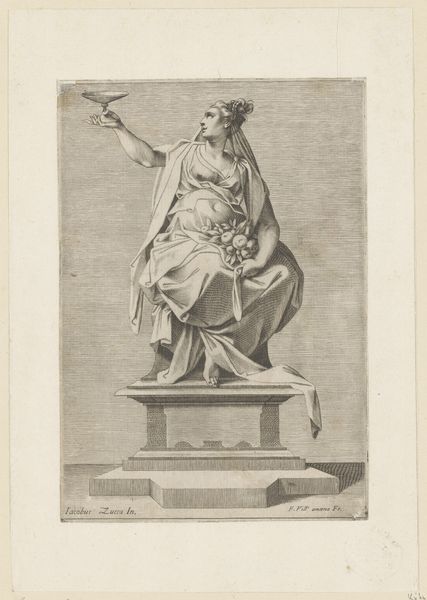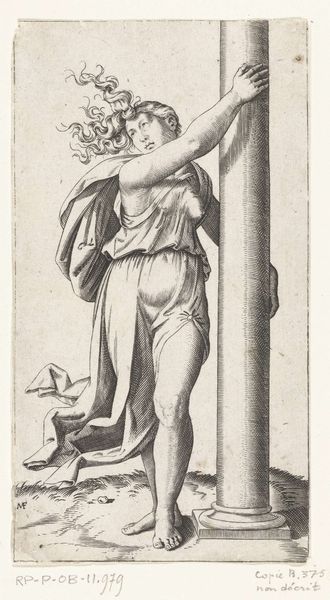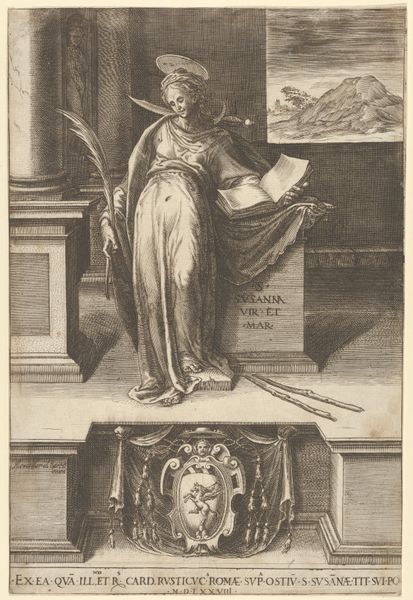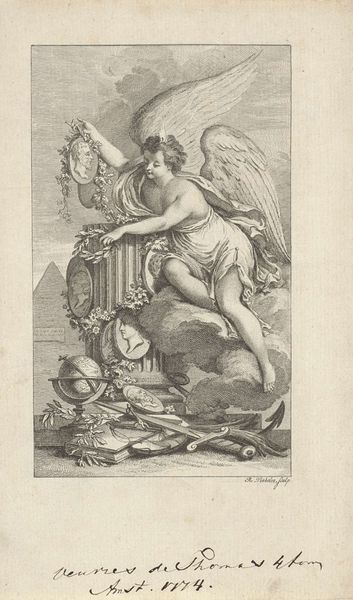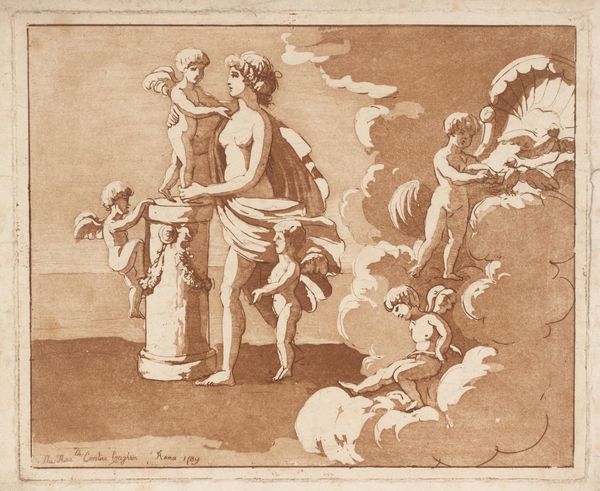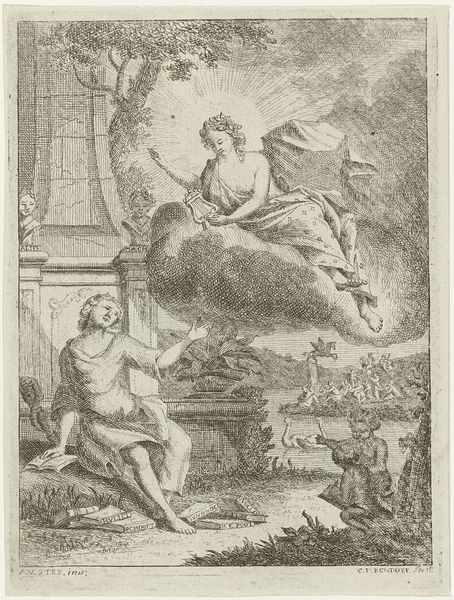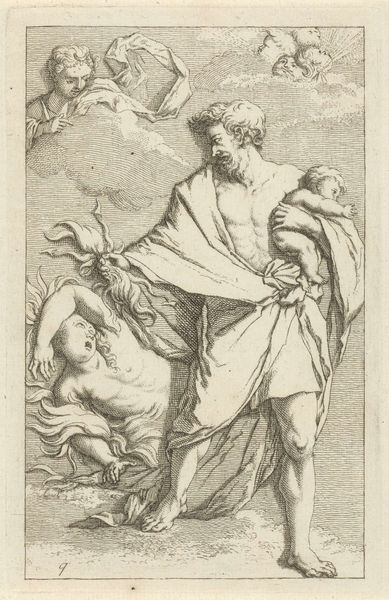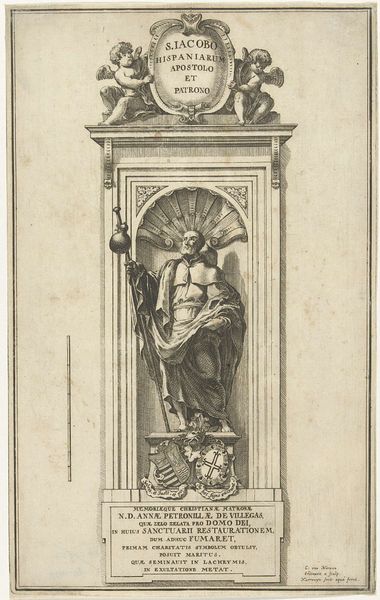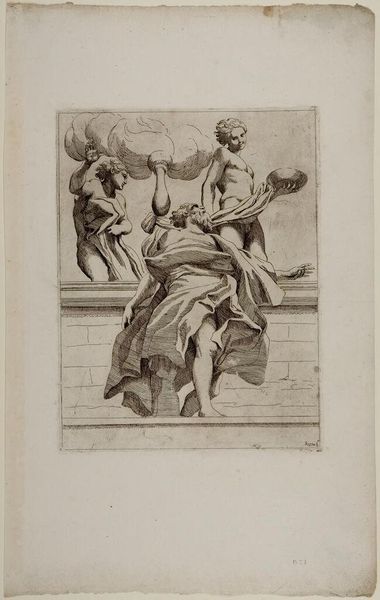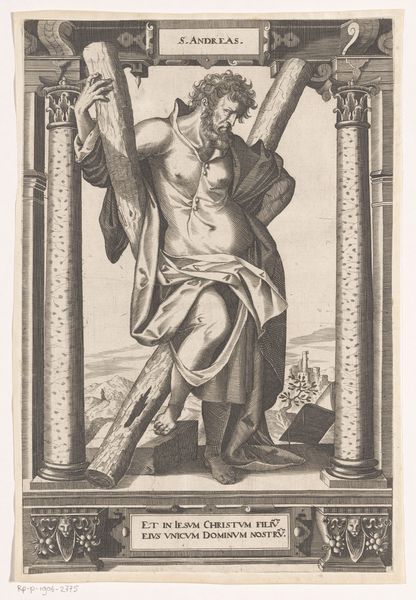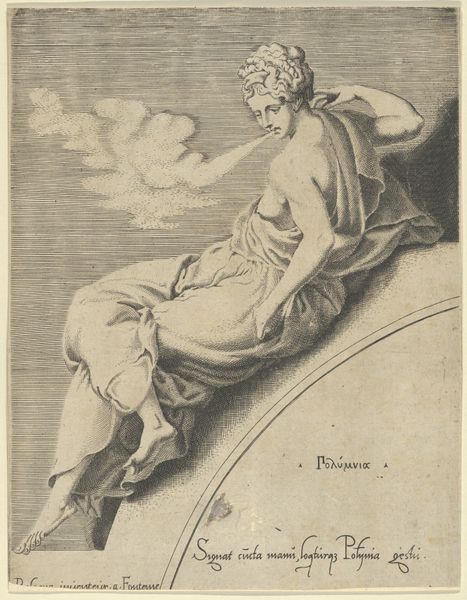
engraving
#
allegory
#
baroque
#
classical-realism
#
figuration
#
history-painting
#
engraving
Dimensions: height 142 mm, width 160 mm
Copyright: Rijks Museum: Open Domain
Editor: Here we have Jan de Bisschop’s "Pomona by a Burning Offering Pillar," an engraving from the mid-17th century. The figure and the altar almost feel like they're floating. How do you interpret this work? Curator: Well, looking through a historical lens, I see this piece as a product of its time, reflecting the ongoing dialogue between classical ideals and the Baroque aesthetic. The figure, likely representing the Roman goddess Pomona, is rendered with a nod to classical sculpture, a form used for civic projection during the Dutch Golden Age. However, the theatrical pose and dramatic lighting point to the Baroque’s influence. Editor: That tension is definitely there! What's the significance of presenting Pomona, specifically? Curator: Pomona, the goddess of orchards, gardens, and fruit trees, would resonate in the 17th century, especially in the Dutch Republic, then experiencing a boom in horticulture and trade. By referencing her, De Bisschop not only showcases classical learning, but also ties it into contemporary societal values around agriculture and commerce. This connects to the history of patronage: for whom was this image made and how would it function publicly? Editor: So it's almost a fusion of high art and contemporary appreciation for the land. And would the intended audience recognize all these layers? Curator: Absolutely. This print likely circulated amongst an educated elite, reinforcing their status through shared cultural knowledge and a visual connection to classical virtues, which the rising merchant class adopted for legitimization purposes. The museum is itself a later instrument in this social process of consecrating art. Editor: That’s fascinating. I hadn't considered how interwoven the artwork is with the social and political climate of the time. Thanks, that gives me so much more to think about! Curator: It's precisely that interplay between art and its context that makes art history so rewarding!
Comments
No comments
Be the first to comment and join the conversation on the ultimate creative platform.

